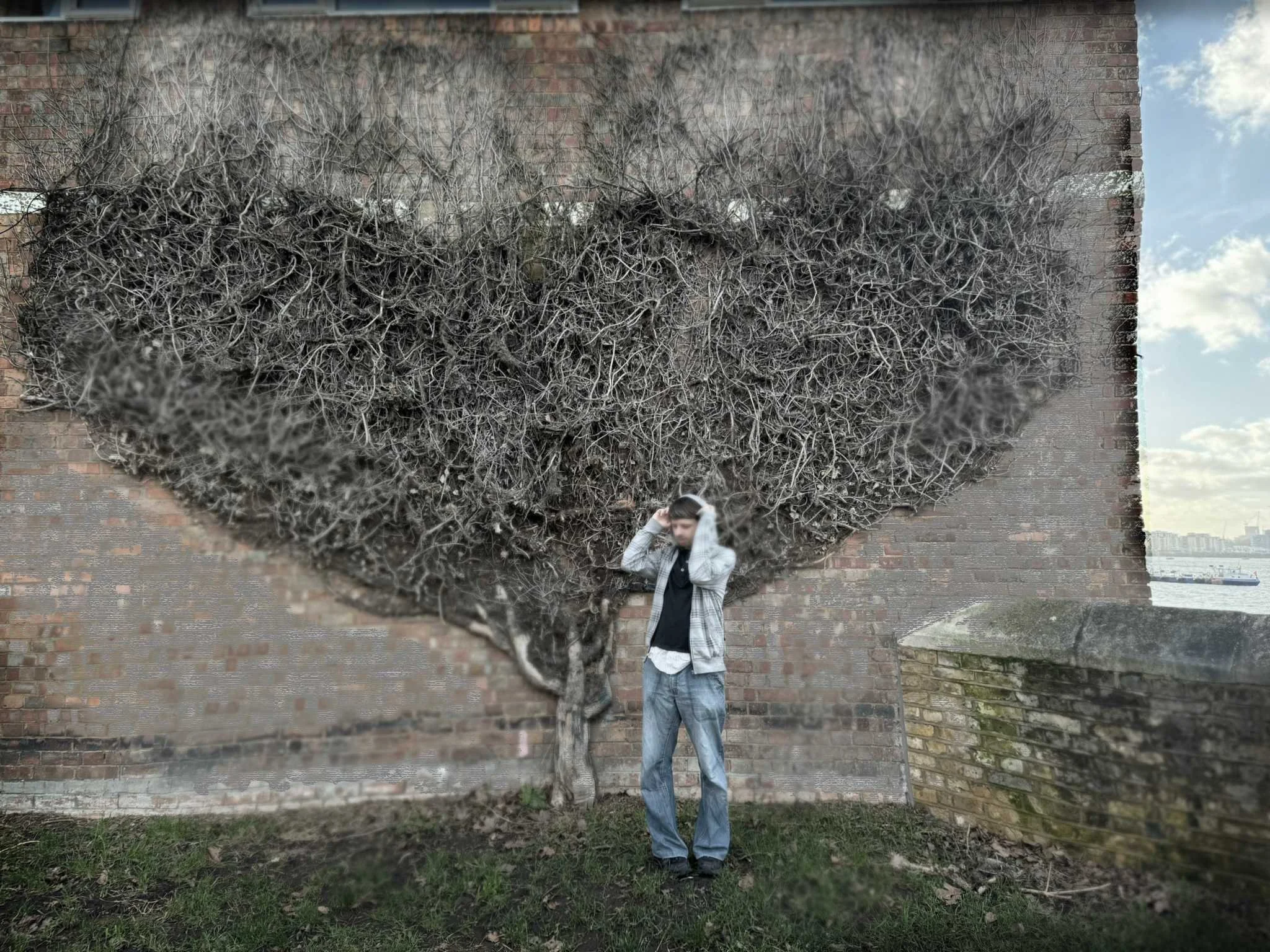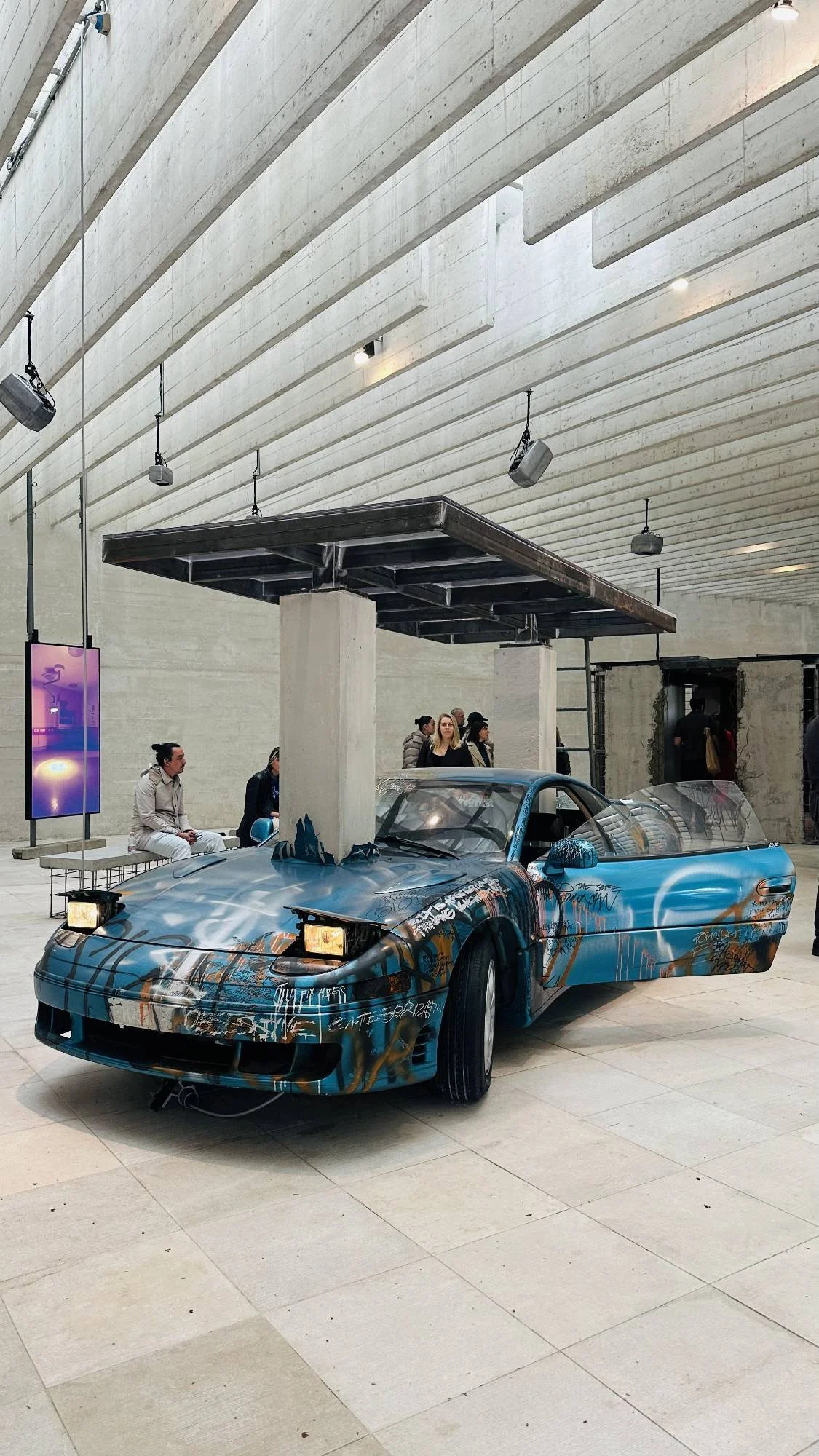Alberto Dapporto
Exhibiton View Matter and Shape x Natalia Criado, 2025
Alberto Dapporto is an architect, curator and researcher working in a multidisciplinary field between art, architecture and design. He is based between Milan and Paris.
Seamlessness is the foundation of Alberto's practices, which develop on different levels of meaning and unite his research on space, curating and contemporary art, as these for him germinate from the same design principle.
His approach transcends unambiguous functionality and creates a network of information that, together, speak of a nebulous universe.
The temporal nature of the installations, the speed with which interior spaces are transformed, and the exhibitions, which are parentheses of openness to dialogue, reveal much about contemporaneity and are all traversed by the idea of the ephemeral: passenger works with which Alberto intends to leave traces of meaning.
Exhibiton View ‘Ciparisso’ at Studio Giovanni De Francesco, 2024
Exhibiton View ‘Piloto’ Milano Design Week, 2024
Private house, 2023
Exhibiton View ‘Piloto’ Milano Design Week, 2024 @FilippoBarbenghi
As an architect and curator, how do you conceive of the dialogue between the two practices of design and curating and how do you combine them in your work?
The fascination with architecture and space has been present in me for a long time and is the basis of my studies and research. At some point, however, I felt that the tension toward curatorial practice should enter my work process with greater presence, especially in the design of exhibitions and installations.
These are two practices that feed off each other and create a necessary dialogue between themselves.
I think that approaching architecture with a curatorial mindset fortifies the narrative of the space itself, and vice versa, an installation that showcases contemporary art or objects of different natures and eras cannot ignore the importance of the setting, whether it is invasive or seemingly nonexistent.
Space and what is on display I believe are strongly complementary in the subject matter of the exhibition, and a balanced dialogue between them allows layers of meaning to be added to knowledge. After all, why always conceptually divide between container and content? The container can also be part of the content or can be in service to it to enhance certain aspects of it, but it always has its own experiential status.
Exhibiton View Matter and Shape x Natalia Criado, 2025
Display for a ’800 French miniature, private house, 2023
Exhibiton View ‘Ciparisso’ at Studio Giovanni De Francesco, 2024
How do you approach installation design? How do you try to keep the tension between intellectual stimulation and visual appeal in balance?
I always begin by asking myself what is the motivation behind the creation of a display, which can be of a different nature: spatial, serving other content to be shown, or aimed at expressing a precise value and conveying a message.
This gives me a measure from which to construct the space and calibrate the choices, trying to translate an intellectual drive through design decisions related to spatiality, its fruition, materials and the feeling that these can arouse in the human being who live them. Certainly, the visual translation of a concept is fundamental, as is its declination in a system made up of perceptions, but almost always this happens consequential to the intellectual origin, as if it were the instrument of language. Then, yes, sometimes you also make a choice for its aesthetic beauty, and that is its value.
Exhibiton View ‘Piloto’ Milano Design Week, 2024
Exhibiton View ‘Ciparisso’ at Studio Giovanni De Francesco, 2024
Exhibiton View ‘Piloto’ Milano Design Week, 2024
The language you use in your installations, especially in your choice of materials, often evokes precise atmospheres derived from other worlds, such as industrial or textile or urban, compared to a domestic space what is your approach instead?
Domestic space has a very different status from that of installation. Although today there is a widespread desire to exhibit intimacy, the home for me is not born with the assumption of exhibition, but with the assumption of well-being, in its various forms.
The home is the spatial extension of its inhabitant, it is like a prosthesis of the human body, so its nature can only be strongly rooted.
Moreover, the question of temporality is particularly important here. Architecture by its nature has a permanent, albeit evolving, condition, while the work of staging has an inherently temporal process. The space of interiors lies between these two polarities, but increasingly close to short time, since houses are like the fittings of our lives: they change quickly, they adapt, they shift.
When relating to domestic space, it becomes a priority for me to make design choices that evoke kinder feelings, that respond to the gestures we adopt in the home, made up of micro-actions, and that generate a comfortable mental and physical situation.
The other key aspect for me is to consider objects. Homes are full of them, sometimes more than they appear, and these, in turn, are other presences, toward which we establish relationships, and for this reason the places in which they move or stop must be considered.
Exhibiton View ‘Ciparisso’ at Studio Giovanni De Francesco, 2024
“The research on space and art is exciting, because it is constantly being generated, and I like to evolve in this way, even looking back, piercing the invention of time that sometimes deceives us with the idea that we have to chase progress.”
Exhibiton View ‘Ciparisso’ at Studio Giovanni De Francesco, 2024
Exhibiton View ‘Ciparisso’ at Studio Giovanni De Francesco, 2024
Often in your work there is a prevalence of neutral colors or materials that have that kind of finish, I'm thinking of your last exhibit for Matter and Shape in Paris, is there a particular reason?
I have a problem with colors, or rather, it is as if colors evoke in me a confusing level of informations, sometimes disturbing, when they are very strong or when they are very varied at the same time. It's a feeling I have toward my own work, but I don't always have the same perception when I look at other people's work. In the case of Matter & Shape, I decided to use a latex that had a milky color by nature to enter into a dialogue with the silver pieces that were on display, but I chose it mainly because of the feeling of softness it evokes to the touch.
I often prefer that the color comes from the nature of the material or object I use, as in the case of the construction poles, burgundy in origin, that I chose for the exhibition I curated and designed for, Ciparisso, in artist Giovanni De Francesco's studio. Last year, for the installation I designed for Piloto during Milan Design Week, I used a very long brown glossy curtain, perhaps my highest point in the use of color.
I also like metals a lot, I find them particularly expressive of many worlds and references that I draw from.
However, yes, I do find an overall chromatic calmness pleasing.
Exhibiton View Matter and Shape x Natalia Criado, 2025
Exhibiton View Matter and Shape x Natalia Criado, 2025
And instead making a passage about your practice related to curating, which is taking a direction very much related especially to contemporary art, how do you go about that?
Let's say that building a project, in general, involves the systematization of many factors that must respond to qualitative and quantitative premises, research, content and needs, whether spatial or curatorial.
Even in the role of curator I try to maintain this approach, believing that it always presupposes this ability to connect and build, where the key aspect is to relate the artworks and artists to the audience.
This involves understanding context, meanings, the urgency of expressing a message, and intercepting the needs and interests of visitors.
It is always important to think about the human being who will experience the work or space; therefore, it becomes critical to bridge the gap between the art and the audience, creating a moment that fosters engagement and dialogue.
Considering the contemporary creative system how do you see your position moving and evolving within it?
It is very labile this contemporary context, but also rigid at times, constantly pushing us to define ourselves. The research on space and art is exciting, because it is constantly being generated, and I like to evolve in this way, even looking back, piercing the invention of time that sometimes deceives us with the idea that we have to chase progress.
I see my work as somewhat blurred, but at the same time also defined, as a cloud of dots, each representing a research, a project, a thought, with its own status, often without connection from what is next to it. However, as I juxtapose this dust, an increasingly sharp image emerges in the center, giving a sense of wholeness.
Exhibiton View Matter and Shape x Natalia Criado, 2025 @CeliaSpenard-Ko
Interview by PASCAL VILCOLLET
What to read next























